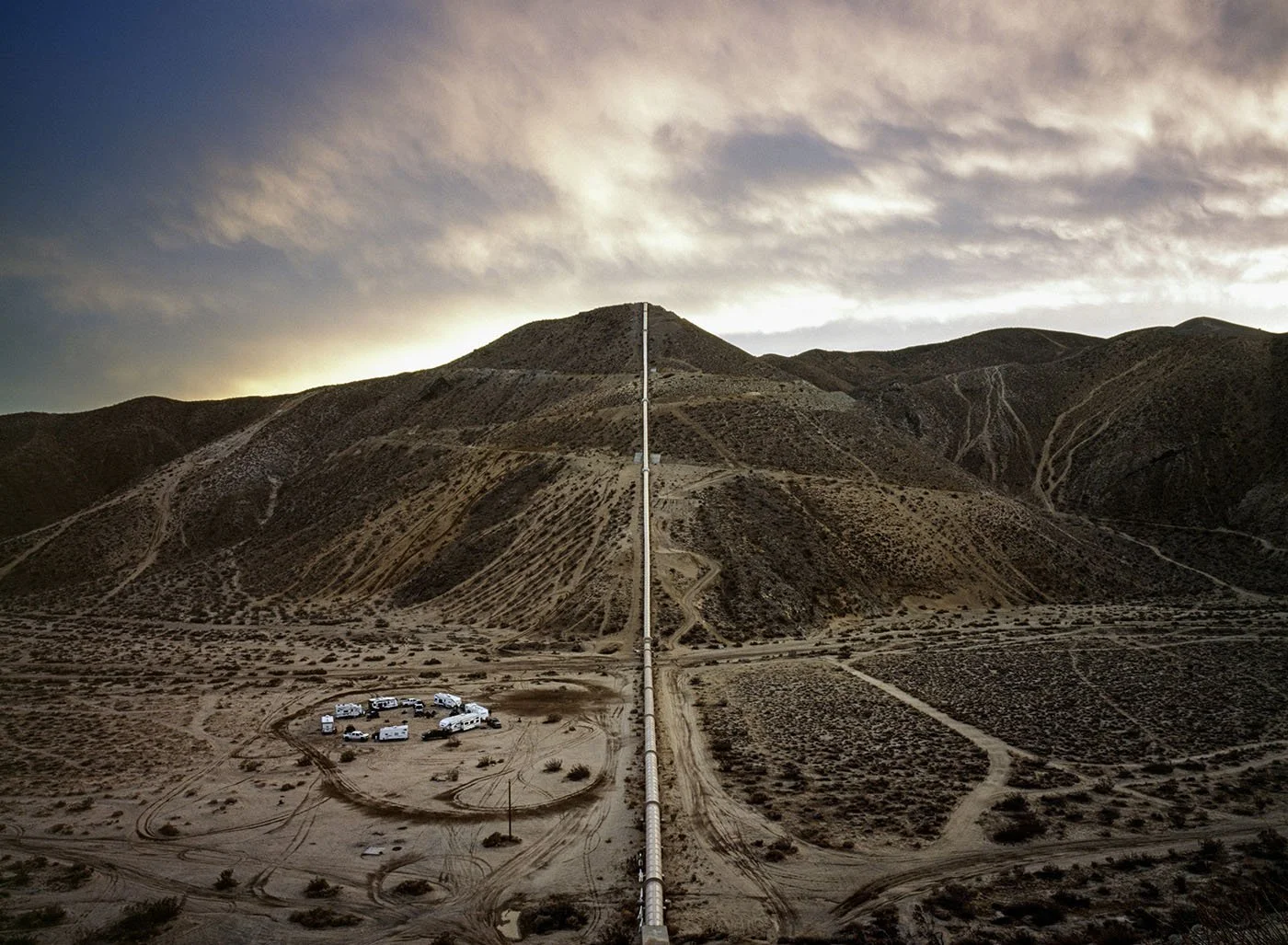BARRON BIXLER
Watershed: A Speculative Atlas of California
New Jersey, United States • barronbixler.com





-
Since I began work on my Watershed project in 2015, I feel like I’ve had a front-row seat to a slow-moving car crash. Five of those eight years were marked by record-setting droughts in California, peaking with a "1,200-year megadrought” in 2021. Then, somehow, 2022 managed to be even drier—and yet garnered fewer superlatives even as reservoirs and aquifers contracted and communities across the state came astonishingly close to running out of water.
Perhaps we've all grown weary of worrying about how dry California has become, of debating what the dryness portends.
But I never set out to photograph the California water system through the lens of drought or climate change. I'm more interested in making pictures of the hulking physicality of California’s water infrastructure and the way it's come to rest so strangely and heavily on the land.
Over the 20th century, the physical and political landscapes of California were shaped by a basic problem of hydrology: most of the state’s water falls in the far north where most of its people are not. The horn-rimmed prophet of the California Water Plan in the 1950s and 60s, Governor Pat Brown, called this inversion of water supply to demand a mere “accident of people and geography.” He made correcting the aberration central to his legacy. The vast waterworks he built allowed cities to bloom where they outstrip local resources and agricultural empires to be built on shifting desert sands.
Los Angeles. San Francisco. The San Joaquin Valley. None of these places would exist as they do today without the 13 trillion gallons of water that is shunted around California every year.
Exploring themes of control and powerlessness, precarity and resilience, damage and remediation, Watershed surveys these landscapes while dwelling on the wider social—and existential— problem of water in California. In doing so, it is an invitation to consider what's been both gained and lost in California’s long quest to harness its most precious resource.
-
Analog capture, Mamiya 7ii using Fuji Provia color reversal film; digital post-processing and printing; exhibition print 36"x26.5" archival inkjet.
